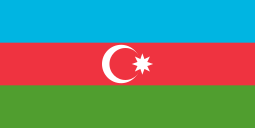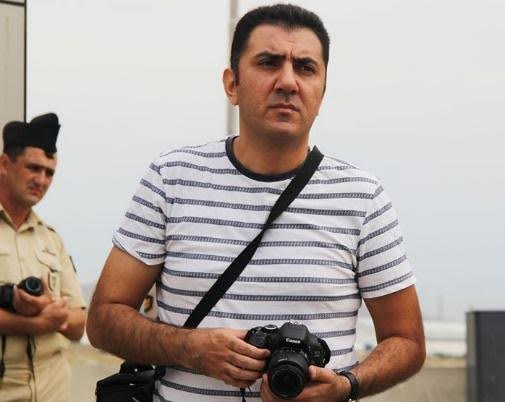.jpg)
On the path to their graves for 30 years
The war is over, yet their silence persists...
03 May 2024
In November 2020, I attended a funeral for a martyr
in Aghdam. The mother of the martyr uttered a striking statement, expressing
her relief that her son's remains were recovered and she could give him a
proper burial. Despite the profound grief, her words reflected a clear
understanding of the harsh realities of war and displacement, as her son had
willingly joined the front lines. Later, in a conversation with the mother, I
inquired about the significance behind her remark.
"We have witnessed and endured many terrible
things, so we find solace in the fact that our child rests in peace."
***
"We discovered a letter beneath the pillow. Sadly,
I no longer possess that document. A journalist took it years ago, but it was
never returned. The letter stated that he wouldn't return until the war
concluded."
On February 26, 1992, Khojaly massacre occurred. This
made Natig very angry, so he wrote a letter and left home. His brother, Nofal
Gasimov, recalls that day...
His family was upset that Natig left without telling
them...
Natig was taken captive in March 1992, and till now,
there is no news about him. Some years back, Nofal went to look for his brother
and was told that Natig had been "burned." But there's no proof to
confirm this.
"We are happy. Each liberated village and district
reminds me of Natig. I imagine Natig in my mind, and it brings me back to the
reality that he is no longer with us. However, I refuse to accept his physical
absence. Maybe those around me have come to terms with it, but not me. I refuse
to believe it."
He is alone in this; everyone else has accepted
Natig's absence, but he resists. The only hope he has is knowing that if he had
died, we would have found his remains. As Natig wrote in his letter, "until the
war is over"... Well, the war is indeed over, and with victory. Yet, he does
not return.
Italian photographer Enrico Sarsini took several
photos of Natig Gasimov when he was captured during the first Karabakh war.
Until now, only one of them was selected, because there was no information
about the others; Natig is surrounded by two Armenian soldiers and holds an
Azerbaijani flag.
In a documentary about Natig, Enrico Sarsini showed
the film crew some pictures; the process when Natig was interrogated and the
Armenian soldiers surrounding him.
Sarzini covered the war as an employee of the magazine "Ogonyok", popular in the Soviet Union. He recorded the moment of Natig's
arrest and his interrogation. One of the persons who conducted the
interrogation was Vitali Balasanyan, a soldier who participated in the first
Karabakh war. Then he held various positions in the unrecognized NKR. The
photographer took a close-up photo of him. In the film about Natig, Balasanyan
is presented with a large-scale photo of him, but he does not recognize
himself, rather, he does not remember his youth, as if the revelation of this
photo could shed light on Natig’s future fate. As Balasanyan does not "recognize" himself in the photo, he does not "remember" Natig either. He only says that, "maybe
we have exchanged him".
***
The International Committee of the Red Cross (ICRC)
collected about 11,000 biological samples from family members of missing
persons in 2014-2022 to support state authorities in clarifying the fate of
missing persons. This process was carried out with the support of the State
Commission on Prisoners of War, Hostages, and Missing Persons, and all samples
were handed over to the State Commission. So, based on these samples, a DNA
profile was extracted at the Molecular Genetics Laboratory of the Main Military
Medical Department of the State Security Service.
According to Nofal Gasimov, such a sample was taken
from him a few years ago.
Ilaha Huseynova, head of the Communication Department
of the ICRC Delegation in Azerbaijan, says that in addition to biological
samples, detailed "ante-mortem data" about the missing persons has been
collected.
"Information provided by the family about the missing
person is collected in this data, information about the date and place of
disappearance, physical and health condition - for example: height, diseases, fractures,
and even the state of teeth at the time of disappearance, etc. are recorded. It
is not always possible to establish an identity of the exhimed human remains
with DNA matching only. Therefore, the above-mentioned information is helpful
in identification."
The compiled list of missing persons is shared with
the State Commission based on the family members' requests to the ICRC.
According to the Commission, the number of missing persons registered during
the first Karabakh war was 3,890. The military is predominant among them. Only
719 of them are civilians.
During the second Karabakh war, 6 people are
registered as missing. They are soldiers. Recently, they were also given the
status of "martyr".
***
According to the information of the General Prosecutor's
Office, 18 mass graves have been discovered so far in the liberated
territories. The remains of 172 people were found in those mass graves. 55 of
them have been identified.
According to Seljan Familzadeh, the first-class
lawyer, the senior prosecutor of the Investigative Department of the General
Prosecutor's Office, the remains of 183 people who were martyred during the
First Karabakh War and buried without recognition in 21 cemeteries located in
13 cities and districts of the republic were exhumed.
"Until April 27, the remains of at least 600 people
were discovered and taken away. 124 of them were discovered in 2022, 133 in
2023, and 48 in 2024" S. Familzadeh said.
***
Ali Huseynov got hurt on August 6, 1993, during the
fight to protect Fuzuli district. As per the information from his companions
present then, he also went missing while injured. Because of his remarkable
acts of courage and skill in the extensive battles he participated in, his
fellow soldiers nicknamed him "Ujas".
Ali's cousin Karim Karimli says that he sent his photo
to all the Armenians he personally knew from Khankendi to Yerevan. "Unfortunately, they either couldn't or didn't want to help. For thirty
years, we could not get any accurate information about him."
Karimli adds that the news of his disappearance
shocked the entire family.
"Contradictory information about his injury, his
capture, and being captured while wounded, along with the possibility and
assumption that he was tortured while wounded, hurt us deeply. One issue that
shook us and brought us to the level of insanity was the sudden change of
opinion of the Armenians on the eve of his almost being found and returned."
Ali's remains were found after 31 years, and he was
buried in Fuzuli on September 11 last year after his identification.
‘Although years have passed, those pains remain fresh in our minds. Finding him has brought back memories, emotions, and along with them, pain and suffering. However, the liberation of our lands, and even the discovery of his remains, albeit not his living body, has provided some relief for our wounds,’ expressed Karimli.












